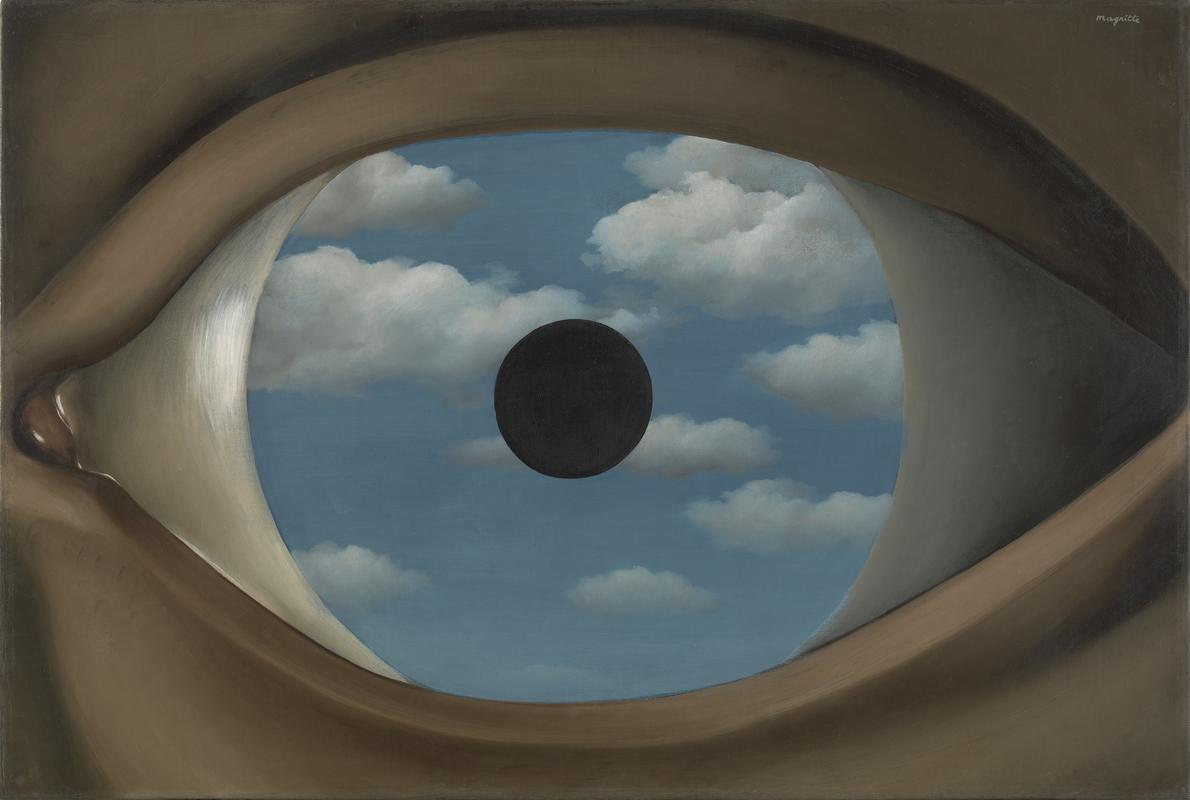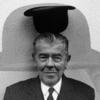More about The False Mirror

Contributor
The Mona Lisa may follow you covertly with her eyes but the single, vacant side-eye of The False Mirror is just plain unsettling.
As viewers gaze into the eye - an abstract window to the sky - the eye simultaneously looks back at them, both seeing and being seen. Rene Magritte even titled the work - with help from his friend Paul Nouge, a Belgian Surrealist writer - to juxtapose the mechanical reflection of the mirror with the selective and subjective reflection of the human eye.
Clearly, Magritte intended this piece to disturb the viewer by blurring the lines between the viewer and the viewed. By using the eye as art object and subject, Magritte undermines the basic assumptions of seeing. Even the artistic construction of the eye assaults the viewer’s anatomical understanding. The lively, nearly luminescent iris is starkly juxtaposed with the black, vacant pupil. The eyelids seem stretched in a mix of wonder and fear, an emotion that is mimicked by the audience. The harsh lines around the lashless lids create a vivid visual distinction between the deadened reality of the stretched skin and the softness of that dreamlike blue sky. Thus, a painted cautionary tale to not trust our own eyes, let alone the eye staring back down at us.
Man Ray, who owned the piece from 1933-36, memorably claimed that The False Mirror was a painting that “sees as much as it itself is seen.” This impression is furthered by how the piece is usually shown. Hung uncommonly high at the Museum of Modern Art in New York, the unblinking stare of that single eye appears omniscient, an all-seeing judge, observing its audience coldly from above.
Magritte claimed that “regardless of its realism a painting’s imagery should not be confused with objects of the real world.” The near photorealistic eye filled with a cloud swept sky demonstrates his Surrealist intentions and his deep desire to bombard the viewer with contradictions.Thus, Magritte’s all-seeing eye watches its success as befuddled viewers meander in the gallery trying to answer the questions raised in his work. Perhaps only the eye knows if art is a reflection of life or truly just a false mirror.
Sources
- “The False Mirror.” Museum of Modern Art. MoMA, 2013. Web. February 5, 2018. https://www.moma.org/collection/works/78938
- “The False Mirror.” Annenberg Learner. Annenberg Learner, 2017. Web. January 30, 2018. https://www.learner.org/courses/globalart/work/102/index.html
- “The False Mirror.” Rene Magritte. Rene-Magritte.com, 2017. Web. February 1, 2018 http://www.rene-magritte.com/false-mirror/
- “About Rene Magritte.” Artsy. Artsy, 2018. Web. January 30, 2018. https://www.artsy.net/artwork/rene-magritte-the-false-mirror-le-faux-mi…
- Lansing, Gerrit l. “‘The False Mirror’: Image Versus Reality.” Notes in the History of Art 4, No. 2/3 (Winter/Spring 1985): 83-84. Accessed February 9, 2018. http://www.jstor.org/stable/23202433.
- Goldhurst, William. “Literary Images Adapted by the Artist: The Case of Edgar Allan Poe and Rene Magritte.” The Comparatist Vol. 3 (May 1979): 3-15. Accessed February 4, 2018. http://www.jstor.org/stable/44366650.
Featured Content
Here is what Wikipedia says about The False Mirror
The False Mirror is a surrealist oil on canvas painting by René Magritte, from 1928. It depicts a human eye framing a cloudy, blue sky. In the depiction of the eye in the painting, the clouds take the place normally occupied by the iris. The painting's original French title is Le faux miroir.
Check out the full Wikipedia article about The False Mirror













The round shape of the eye and the contrast in value between the dark tone of the skin and the light sky where the iris would be bring the focal point of this piece to the center. As the title says, the eye is a false mirror, and so perhaps it is instead a window, and we as the viewer and looking into some scene from the artist's mind.